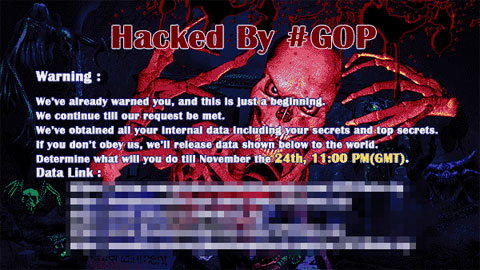BKDR_WIPALL.C
Windows


Threat Type: Backdoor
Destructiveness: No
Encrypted: No
In the wild: Yes
OVERVIEW
Dropped by other malware, Downloaded from the Internet
This backdoor arrives on a system as a file dropped by other malware or as a file downloaded unknowingly by users when visiting malicious sites. It may be dropped by other malware.
It connects to certain websites to send and receive information.
TECHNICAL DETAILS
311,296 bytes
EXE
Yes
04 Dec 2014
Connects to URLs/IPs
Arrival Details
This backdoor arrives on a system as a file dropped by other malware or as a file downloaded unknowingly by users when visiting malicious sites.
It may be dropped by the following malware:
- BKDR_WIPALL.D
Installation
This backdoor drops the following files:
- {malware path}\{random number}_{random number} <-output of -s command
Autostart Technique
This backdoor registers its dropped component as a system service to ensure its automatic execution at every system startup. It does this by creating the following registry entries:
HKEY_LOCAL_MACHINE\SYSTEM\CurrentControlSet\
Services\PMSvc
ImagePath = "{malware path}\{malwar file name}.exe -k"
HKEY_LOCAL_MACHINE\SYSTEM\CurrentControlSet\
Services\PMSvc
DisplayName = "Performance Manager"
HKEY_LOCAL_MACHINE\SYSTEM\CurrentControlSet\
Services\PMSvc
ObjectName = "LocalSystem"
HKEY_LOCAL_MACHINE\SYSTEM\CurrentControlSet\
Services\PMSvc
Description = "Performance Manager"
Other Details
This backdoor connects to the following website to send and receive information:
- {BLOCKED}.{BLOCKED}.102.100
- {BLOCKED}.{BLOCKED}.154.99
- {BLOCKED}.{BLOCKED}.126.116
NOTES:
This backdoor accepts any of the following parameters:
- -d - to delete all files in all fixed or remote (network) drives
- -m - to drop and execute %Temp%\usbdrv32.sys
- -k - to start installed service
- -i - to install itself
- -s- attempts to connect to network shares with hardcoded user name and password
- -n -, delete files in network/mapped drives, drops %Windows%\walls.bmp and displays the following image:

- -a - check if system is 64bit, installs and executes {random}kph.sys and {random}ams.exe files
SOLUTION
9.700
11.316.07
03 Nov 2014
11.317.00
04 Nov 2014
Step 1
Before doing any scans, Windows XP, Windows Vista, and Windows 7 users must disable System Restore to allow full scanning of their computers.
Step 2
Note that not all files, folders, and registry keys and entries are installed on your computer during this malware's/spyware's/grayware's execution. This may be due to incomplete installation or other operating system conditions. If you do not find the same files/folders/registry information, please proceed to the next step.
Step 3
Remove the malware/grayware file that dropped/downloaded BKDR_WIPALL.C. (Note: Please skip this step if the threat(s) listed below have already been removed.)
- BKDR_WIPALL.D
Step 4
Restart in Safe Mode
Step 5
Delete this registry key
Important: Editing the Windows Registry incorrectly can lead to irreversible system malfunction. Please do this step only if you know how or you can ask assistance from your system administrator. Else, check this Microsoft article first before modifying your computer's registry. Before you could do this, you must restart in Safe Mode. For instructions on how to do this, you may refer to this page If the preceding step requires you to restart in safe mode, you may proceed to edit the system registry.
- In HKEY_LOCAL_MACHINE\SYSTEM\CurrentControlSet\Services
- PMSvc
- PMSvc
Step 6
Search and delete these files
- {malware path}\{random number}_{random number}
- %windows%\walls.bmp
Step 7
Restart in normal mode and scan your computer with your Trend Micro product for files detected as BKDR_WIPALL.C. If the detected files have already been cleaned, deleted, or quarantined by your Trend Micro product, no further step is required. You may opt to simply delete the quarantined files. Please check this Knowledge Base page for more information.
Did this description help? Tell us how we did.

